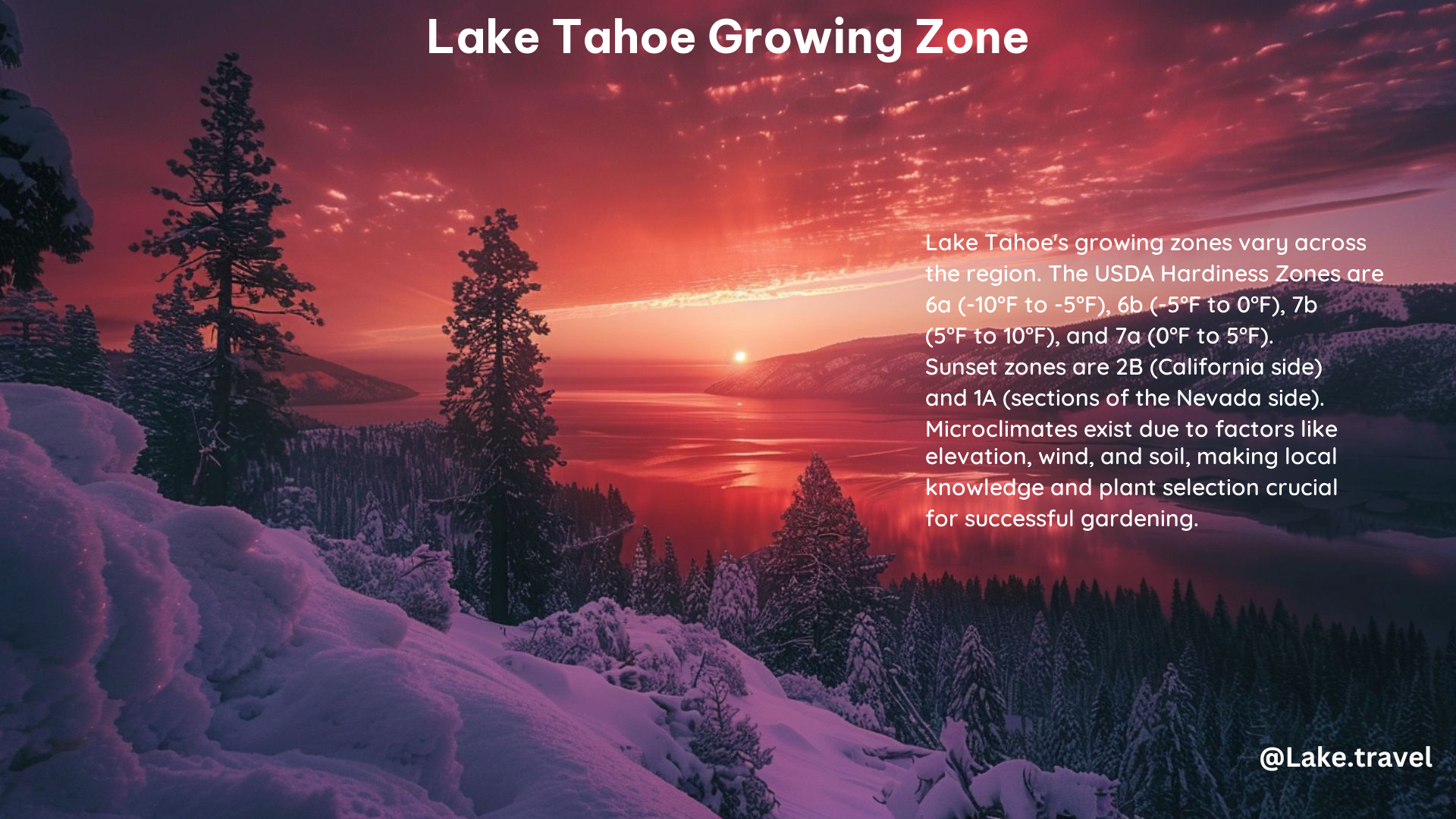Lake Tahoe, nestled in the Sierra Nevada mountains, is a unique and captivating destination that offers a diverse range of growing conditions for gardeners and plant enthusiasts. With its varied microclimates and distinct USDA Hardiness Zones, understanding the Lake Tahoe Growing Zone is crucial for successful gardening and landscaping in this stunning region.
USDA Hardiness Zones in Lake Tahoe
The USDA Hardiness Zones are a crucial factor in determining which plants can thrive in the Lake Tahoe region. The area encompasses several distinct zones, each with its own temperature range and growing conditions.
| Location | USDA Hardiness Zone |
|---|---|
| South Lake Tahoe, California (ZIP Code 96150) | 6a (-10°F to -5°F), 6b (-5°F to 0°F), 7b (5°F to 10°F), and 7a (0°F to 5°F) |
| Truckee | 6a (-10°F to -5°F) |
| El Dorado Hills | 9b (25°F to 30°F) |
These zones provide a valuable guide for gardeners, helping them select plants that can withstand the region’s unique climate and temperature fluctuations.
Sunset Zones in Lake Tahoe

In addition to the USDA Hardiness Zones, the Sunset Zones also play a significant role in determining the growing conditions in Lake Tahoe. The Sunset Zones are a more localized system that takes into account factors such as precipitation, humidity, and the length of the growing season.
| Location | Sunset Zone |
|---|---|
| California Side | 2B |
| Nevada Side | 1A |
Understanding the Sunset Zones can help gardeners choose plants that are well-suited to the specific microclimates found on the California and Nevada sides of Lake Tahoe.
Microclimates and Plant Selection
The Lake Tahoe region is known for its diverse microclimates, which can significantly impact the growing conditions and the types of plants that can thrive. Factors such as altitude, wind, and sun exposure can create variations in temperature, precipitation, and soil conditions, even within a relatively small geographic area.
When selecting plants for your Lake Tahoe garden, it’s essential to consider these local variations and choose species that are well-adapted to the specific conditions of your site. Native and adapted plants, such as Catmint, Lupine, and Black-eyed Susans, are often the best choices, as they are more resilient to the region’s climate.
Vegetable gardening is also possible in Lake Tahoe, but it requires careful planning and selection of plants that can thrive in the short growing season. Cherry tomatoes, herbs, and leafy greens are good options for the Lake Tahoe Growing Zone.
Gardening Tips and Resources
Gardening in the Lake Tahoe region presents unique challenges, but with the right approach and resources, gardeners can create thriving and beautiful landscapes.
Soil Amendments
The soil in Lake Tahoe is often sandy and requires amendments like compost and steer manure to support plant growth. Incorporating these materials can help improve soil structure and nutrient content, ensuring your plants have the resources they need to thrive.
Gardening Events
Local events, such as the Grow Your Own Festival, can provide valuable resources and guidance for high-elevation gardening in the Lake Tahoe area. These events often feature workshops, plant sales, and opportunities to connect with local experts and fellow gardeners.
Consult Local Experts
Consulting with local nurseries and gardening experts can be incredibly helpful in navigating the unique growing conditions of the Lake Tahoe region. These professionals can offer advice on plant selection, gardening techniques, and strategies for overcoming the challenges of high-altitude gardening.
By understanding the USDA Hardiness Zones, Sunset Zones, and local microclimates, gardeners in Lake Tahoe can make informed decisions about plant selection and gardening practices, ensuring a successful and thriving garden in this stunning mountain environment.
